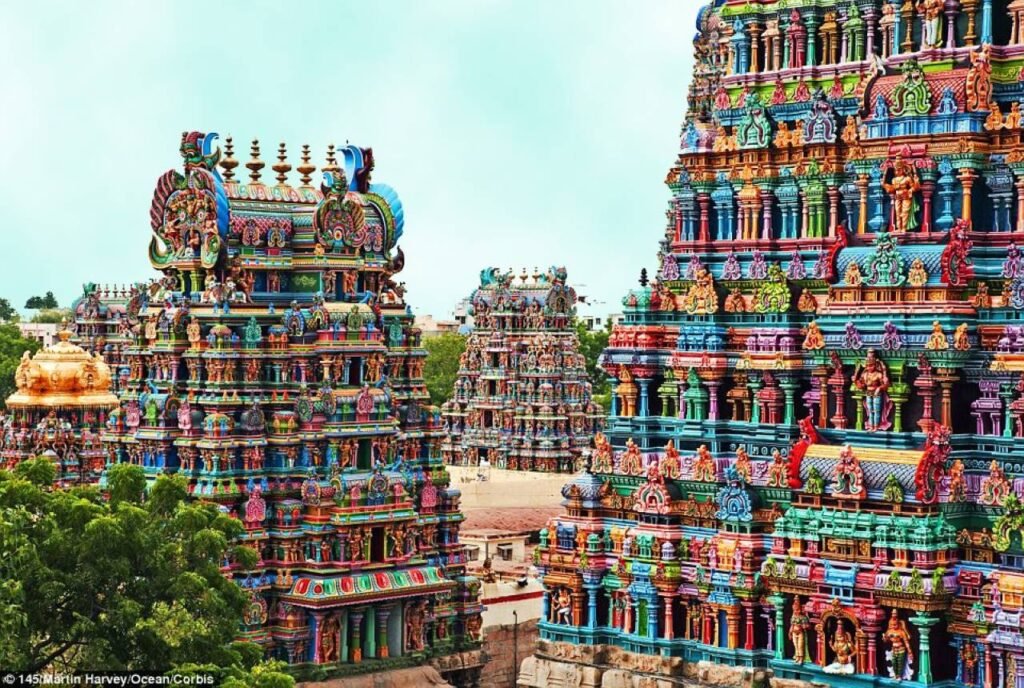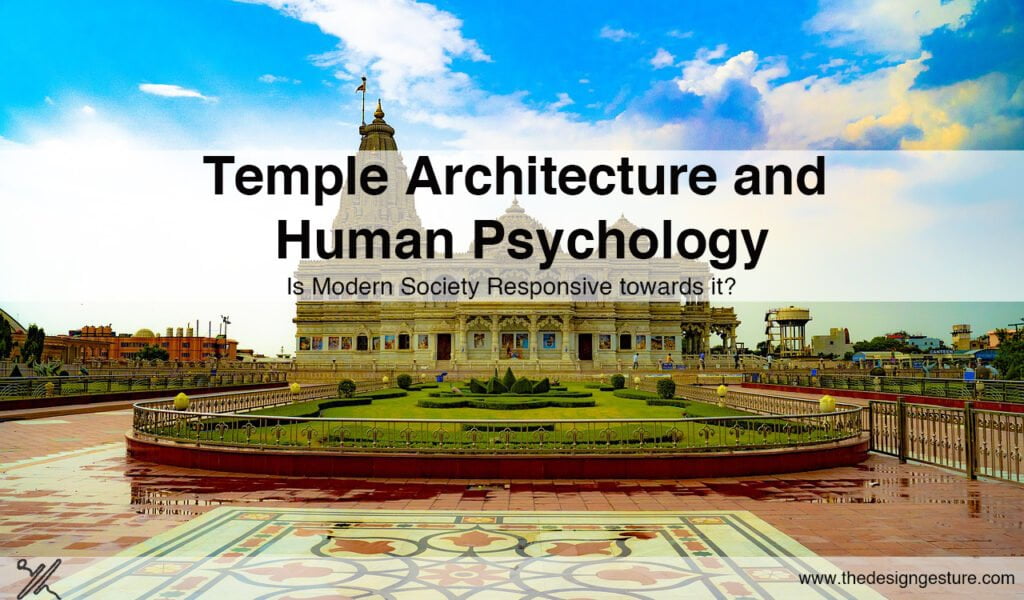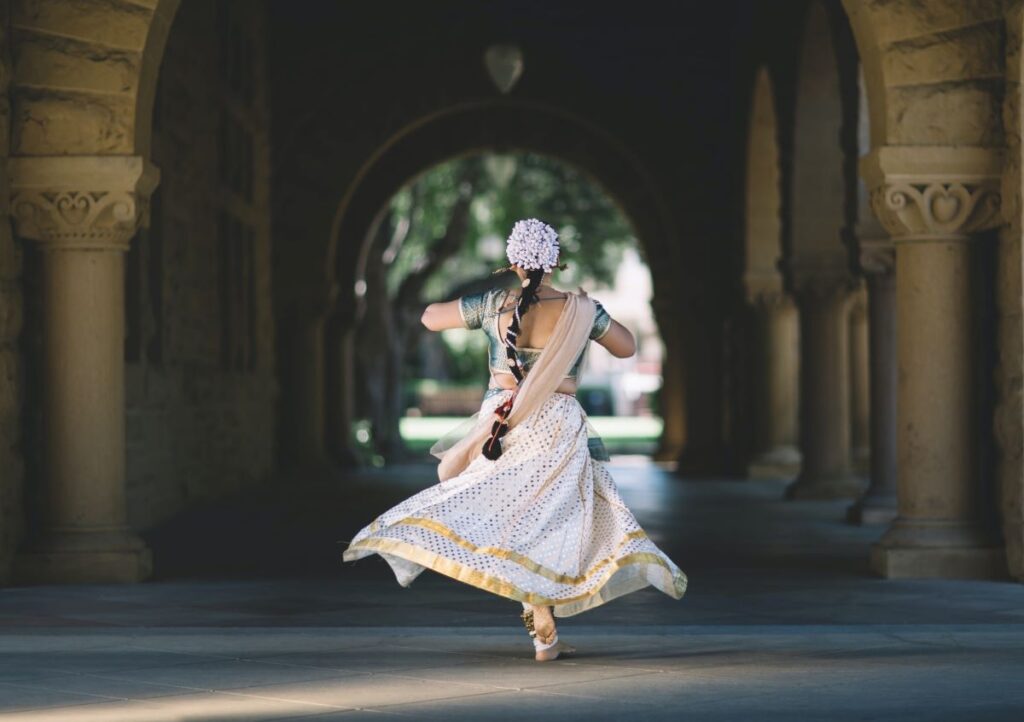Table of Contents
Introduction
The soul of a Hindu Temple is influenced by the philosophy that everything is linked with each other and in the end, it all comes together. According to Indian philosophy, the most vital and noteworthy values are the pursues of artha (wealth and prosperity); kama (sex and pleasure); dharma (moral life and virtues); and moksha (self-knowledge and realization). These four beliefs are said to be the purposes of humanity. Every aspect of a temple architecture, the artistic motifs, even the intricate decorations on the pillars, all of them come together to adhere to this very concept of omnipresence.
Temple architecture in India developed in all parts of the country during ancient times. The design in these temples is influenced by geographical situations, culture, customs, climate, ethnicity, race, history, and language. The Garbha-Griha is also known as Womb-Chamber is the main part of the temple where the deities are kept. The Garbha-Griha is usually provided with a passage around it but in some temples, there are other secondary shrines present in the complex itself.
In the earlier times, one could easily distinguish the difference between temples from South or North based on certain architectural features. For example, In the northern temples (The Nagara), the Shikhara was a distinguishable component whereas, in the Southern temples (Dravida), it was the Gopuram which is a huge gateway that leads to the sacred courtyard. The common features in their temple architecture include layout, decorative features at the interior as well as exterior and their positions.
Layout
The layout of a Hindu temple conforms to a geometrical design known as ‘Vastu-Purusha-Mandala’. This name is derived from three significant mechanisms, Vastu – meaning dwelling or place of habitation, Purusha – meaning the universal principle, and Mandala – meaning circle. This mystical diagram of Vastu-Purusha-Mandala is known as ‘Yantra’ in Sanskrit. The typical layout of a Hindu temple architecture is derived from this diagram is derived from fundamental beliefs, rituals, practices, customs, mythologies, and mathematical norms.
As per Vastupurushamandala, the most sacred template is the 8 x 8 grid. This grid is known as Bhekapada or Ajira. Thus, the layout of temple architecture has a central axis with diagonals that represent Purusha. A square is created around the axis referring to the four main directions. The square, circumcised by the circle is considered sacred and the square is considered human which can be located in everyday life. Thus, kind of layout is seen in huge temples that can be considered superstructures.

Basic Components of a Temple
- Ardhamandapa – In Hindu temple architecture,Ardhamandapa, also known as Arth Mandapa or Ardh Mandapa is a four-pillared outermost part of the entrance of the temple. It is a veranda or an entrance porch. It is generally open to provide light and ventilation and also acts as a provisional space between the exterior and interior of the temple (The Mandapa). The number of Ardhamandapa is equal to the number of entrance doors in the temple.
- Entrance – In Hindu temple architecture, the entrance is also known as Mandapa, is usually decorated with forms of river goddesses and stripes of floral, figural, and geometric embellishment. At times, an ambulatory is provided around it. Mandapa also known as Mantapa or Mandapam, is a pavilion or a hall surrounded by pillars, used as a gathering area or for public rituals.
The design of Ardhamandapa and a Mandapa in temple architecture usually resembles each other in terms of design, carving, and decoration. Depending upon the presence or absence of walls, they can be enclosed or open. In the case of more than one mandapa, each one is given a specific function and named after it. For example, a Mandapa used for marriage will be known as Kalyana Mandapa.
- Garbhagriha – Garbhagriha, also known as Sanctum, is the innermost part of the temple architecture. This is considered the most sacred part of the entire time as this is the place where the deity itself is situated. This is headed by one or more attached mandapas (porches or halls) with pillars, that are linked to the sanctum by an open or closed atrium (antarala).
- Shikhara, Amalaka – The Shikhara at the top is usually curvilinear. Small rectilinear Shikharas can be found on top of the Mandapas as well. Amalaka is a round component with folds on the circumference and sits on top of the Shikhara. In Hindu temple architecture, the interpretation of it is that it indicates the sun and is considered to be access to heaven.
- The Vahan – The Vahan is a very commonly seen element in the Hindu temple architecture.The mount of the main deity of that particular time is known as Vahan. It is placed axially in the sanctum. This can be an animal or a mythological character. This can be placed under or at the side of the deity and the deity may be sitting or standing on the ride or Vahan.
- Kalasa – In the earlier days, a Kalasa was constructed by stone. As temple architecture and technology proceeded, they were made of copper followed by brass and gilt gold. It isn’t fixed on the Shikhara directly with adhesives or cement. Rather, it is held in place with the help of an overhanging pipe rooted inside the amalaka.

Types of Hindu Temples
The main types of Hindu Temples include Northern or Nagara style, Southern or Dravidian style, and Mixed or Vesara style.
- Nagara or the Northern style
The Nagara-style temple is found in various parts of the country with regional influences. There are two most common traits of Nagara-style temple architecture. The first one is its Shikhara that stretches and tapers above. The second one is the square temples with graduated projections outside. It is commonly built on a stone platform with steps leading up to it.

- The Dravida or the Southern-style
The Dravidian style of temple architecture or Southern-style architecture was established by the Pallavas who ruled portions of Karnataka, Andhra Pradesh, and northern Tamil Nadu until the ninth century. As opposed to the Northern style, it is enclosed inside a compound wall. In Southern-style, Kalasha is called the Shikhara and instead of the curvilinear Shikhara, it has a stepped pyramid-like structure. The sacred hall in this is the smallest as it is the oldest part of the temple.

- The Vesara or Mixed style
Vesara temple architecture are a blend of both Northern and Southern styles. The name Vesara has been derived from the Sanskrit word Vishra which means ‘taking a long walk’. This style of temple architecture was developed in present-day Karnataka. This style was started by Chalukyas of Badami and has been in practice ever since 500 AD.

Effect on Human Psychology
The construction of temples is believed to commence in the Kalyug, the last of the four Vedic eras. In the earlier eras, namely, Satya Yuga, Treta Yuga, and Dwapar Yug, people were able to connect with God on their own. After temples were created, they became a center of attempts at communication with God. Eventually, temple architecture became a specific genre. Generally, people went to temples for worship. The other reasons for temple visits include the organization of mass feedings, first haircut ceremony, marriages, astrological solutions, etc.
The temples offer an environment that helps people surrender in front of God without any false sense of ego or pride, with humility, open-mindedness patience, minimalism, and self-contain. It is said that every single ritual right from bell-ringing to performing the pradakshina has a hidden meaning that affects human psychology. These rituals performed along with the aroma of incense sticks, the tinkling of handbells, and the reciting of prayers all together have a calming effect on the person’s emotional state, making them feel uplifted sane.
Despite a thousand problems and negativities with which a person enters the temple, they always seem to leave feeling content, peaceful, re-energized, and blissful. Hinduism is said to be the oldest religion in the world. It isn’t just a bunch of customs but something that affects human psychology. Even in today’s day and age, people are seen to follow the old culture passed on to them by their ancestors. People still believe in the things their forefathers had faith in without questioning it once. It is also said that the rituals or customs in the Hindu religion are merely a way of life for people. Hence, the conviction towards it.
Effect on Human Senses
Our human body is known to have five senses. All these senses stimulate when the rituals are performed like a bell ringing, application of tilak on the forehead, offering flowers and other contributions, igniting the camphor, and performing the pradakshina. Once the senses open up, the human body is more capable of absorbing positive energies which in turn affect human psychology.
A temple is a boost of positive energy. There is absolutely no discrimination in terms of caste, creed, or religion. Since every person comes with an untainted state of mind, it creates positive vibrations. These vibrations create a positivity wave in the temple space which is absorbed by people making them feel enlightened. A lot of people have confidence in temples affecting human psychology. It is also said that these rituals open up seven healing centers in the body. As a result, a lot of people claim that they have healed from a certain trauma or mental situation after visiting spaces of religious significance.
Rituals and Their Effect on Human Psychology
Wondered why you’re asked to leave your footwear behind every time you visit a temple? There are two major reasons for this. Firstly, this action is a metaphor for leaving your egos or pride behind and entering the temple with a clean state of mind. Secondly, spaces that are a part of temple architecture have a higher level of vibrations of electric and magnetic fields.
As per Hindu temple architecture, the flooring of a temple is a good conductor of absorbing energy. Walking barefoot inside the temple space helps the energy pass throughout a person’s entire body. The rituals performed aren’t superstitious or just something people have been blindly following for centuries. It is ancient help passed down from generation to generation for the betterment of humanity.
Bell-Ringing
This ritual activates a person’s hearing senses. The bell is made out of materials like copper, lead, zinc, cadmium, and nickel. The bell-ringing creates a vibration that is both striking and satisfying. These vibrations have a calming effect on human psychology and makes them feel content. This sound is also known to create synchronization between both halves of your brain.
Ignition of Camphor
This ritual activates a person’s sense of touch as well as a sense of sight. Camphor is usually ignited during an aarti. This improves the sense of sight. After the ritual is done, a person is expected to linger their hands above the lit camphor and place it on their eyes and head. This activates the sense of touch.
Offering of Flowers
This ritual is also meant to activate the sense of touch. Some deities have specific flowers to be offered such as lotus for the goddess Lakshmi and hibiscus for Lord Ganesha. The colorful flowers and their sweet aroma together create a soothing effect on human psychology. This activates the sense of smell as well.
Drinking Theertham
Theertham, also referred to as holy water is made out of different ingredients based on the region. At times, it is either a mixture of water, herbs, and flowers or just milk and sugar or a mixture of milk, curd, sugar, ghee (also known as clarified butter), and honey, also known as panchamrut. This activates a sense of taste in a person.
These are stored in copper vessels due to which the liquid is charged with positive vibrations. This not only uplifts human psychology but also provides an ample number of health benefits for the body. It is also known to clear tridoshas, namely, Vata, pitta, and Kapha if the water is stored for more than eight hours. This also helps cure issues like cough, cold, and sore throat.
Performing Pradakshina
The word Pradakshina means ‘walking towards the right’. After worshipping and offering, the devotee must take rounds around the idols three times in a clockwise direction. Most people perceive pradakshina as a reflex after worshipping since it is deep-rooted in human psychology. This ritual helps a person soak up good vibrations emerging out of the idol and the entire temple space. It also helps in having good health and a calm state of mind. Each and every ritual embodies a concept and has hardcore and valid scientific reason behind it.
Pilgrimage Sites
From the earlier days, people saw pilgrimage as a sacred journey. It was seen as a process that helped people connect with God. It is supposed to be a divine experience. The entire journey of traveling to the location, looking at places with historical, religious, and spiritual importance, meeting holy people, all together made the experience memorable.
This also includes living in a place with divine energy, seeing locations where the divine entity has lived in their past life, listening to stories of their creations, etc. The whole process of bonding with divine spaces and the public does a great deal on human psychology. This entire phenomenon of mental peace through visiting temples has seemed to be forgotten by a lot of people as well as temple management.
Author’s Note
Shegaon is a small town in the district of Buldhana, famous for the Gajanan Maharaj Temple. A huge number of pilgrims are known to visit the temple every single day. Thousands of people coming here have a basic human psychology that visiting the temple and holy places in the vicinity of the temple will help them find solace and believe that they will find peace. Needless to say, the management takes extreme efforts to make that come true. Right from accommodations to temple management, they make the entire journey a divine experience.
Upon visiting this place, itself, one would feel a sense of tranquility in the atmosphere. Even in today’s time, all the necessary actions are strictly followed adhering to Covid-19 standards including social distancing. The entire experience is silent, peaceful, calm, and makes you feel in touch with positive energy and divine vibrations.

Shirdi is a small town located near the city of Nashik visited by most people to see the Sai Baba temple there. Since the temple is the center of all major activities, most of the time, one would find it pretty crowded. Upon visiting the temple, one can find that all the cultural notions, the purposes of visiting temples and its effects on human psychology are pretty much lost. Right from the entrance with people enters in enormous volumes and security guards shrieking right in their faces to the sacred hall where the idol is placed.
There is major misconduct of the management where people standing in the Garbhagruha are literally being pulled out and asked to vacate the premises, leaving the devotee with an experience that is displeasing, problematic, undesirable, and just plain bothersome. The sacred hall with pillars having intricate patterns and decorative motifs and the high ceiling creating a heavenly feel is barely noticed by the worshippers who were ramming into each other making their way to the position of the deity. Most of the times, the devotee is himself not in touch with their own human psychology.
From removal of footwear to performing Pradakshinas, each and every action has a positive effect on human psychology that makes the entire experience enlightening. It is a series of activating senses and attempts at calming the mind, making it a peaceful experience. However, the current day scenario may or may not adhere to these spiritual standards of worship. People have come a long way from the original purpose and healing benefits of temple architecture to making businesses out of it.




